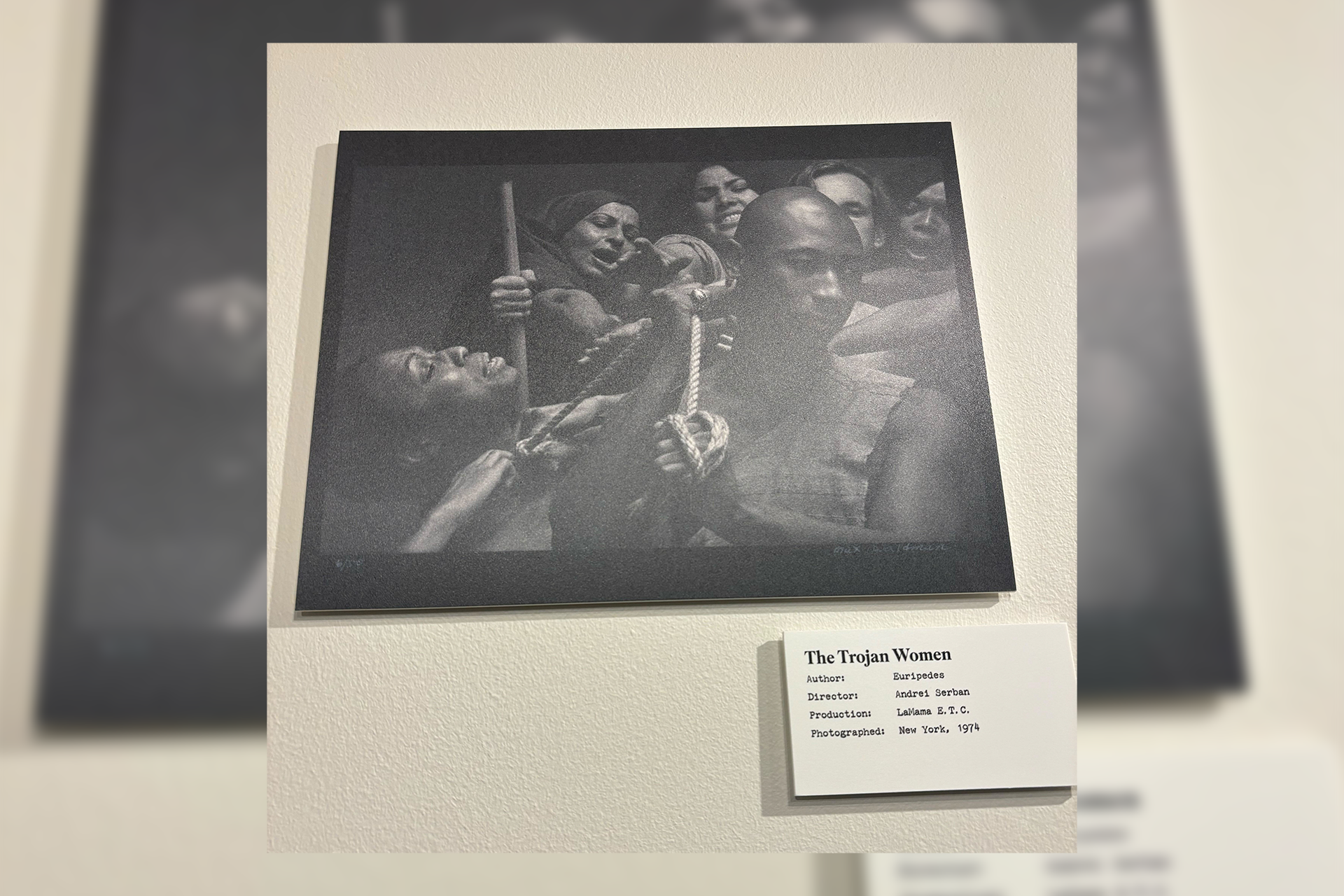
Librarian Drew Barker wanted to know how to get people to stop before they entered the Michelle Smith Performing Arts Gallery. The answer: 53 original prints by photographer Max Waldman.
Barker, a performing arts librarian at the University of Maryland, curated a visually striking gallery in The Clarice by pulling from a collection of 400 prints.
“I was looking for the striking image. I was looking for something that would not only appeal to me but appeal to someone who knew nothing about theater and dance,” Barker said.
Waldman is best known for his photographs capturing the yearning, drama and emotion of theater and dance. He rose to prominence in 60s and 70s Manhattan, where he recreated scenes in a private studio instead of taking traditional performance art photography inside theaters.
[Greek myths are given new life in The Clarice’s ‘Metamorphoses’]
The collection at the Clarice places Waldman’s work in dialogue with each other. Each photograph is arranged like a tile in a mosaic — beautiful on its own, but breathtaking when experienced as a collective.
Stephen Henry, the head of the Michelle Smith Performing Arts Library, hopes the gallery will serve as inspiration for this university’s performing arts students.
“A dancer or an actor can learn something by looking at [the photographs] either in terms of how to express an emotion or express something that’s happening in the scene,” Henry said.
The photographs are reminiscent of classical sculptures and art, like an avant-garde Michelangelo or Rembrandt. Subjects posed with taut muscles or facial expressions frozen in delight and agony.
Waldman’s influences of Baroque artist Caravaggio and impressionist sculptor Rodin are evident in the collection.
In the image “Le Jeune Homme et la Mort,” Waldman poses ballet dancer Mikhail Baryshnikov in a Rodin-esque light. Baryshnikov’s ribs and sinewy muscles are defined as if they’ve been carved from a block of marble.
For the viewer, Waldman’s subjects display emotions solely through the poses their bodies assume.
Lindsay Carpenter, the head of research education at this university, spoke about the exhibit’s sharp eye-catching qualities during “Speaking of Art,” a lecture series inaugurated by Drew Barker’s lecture on the Waldman exhibit.
“The figures in the photos are posed with a lot of sharp angles … making your eye jump around parts of the wall,” Inge Carpenter said on her first impressions of the gallery.
“Sharp” is an apt description of Waldman’s art. Not only does Waldman capture the sharpness of pointed feet and rigid elbows, he infuses a raw emotion into his works.
[Strathmore’s 2025 Artist in Residence program features UMD talent]
In the photographer’s interpretation of “Midsummer’s Night Dream,” characters Titania and Bottom are embraced with tenderness and affection, leaving the viewer with a sense of intrusion despite the fantastical, whimsical composition of a fairy queen hugging a donkey head.
Though the gallery is small, Waldman’s wonderfully artistic work showcases the magic of theater and entices busy students to stop and appreciate his art.
